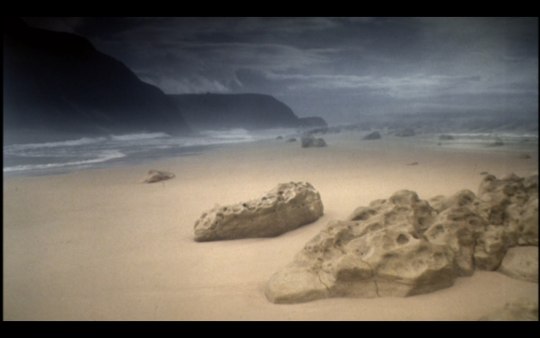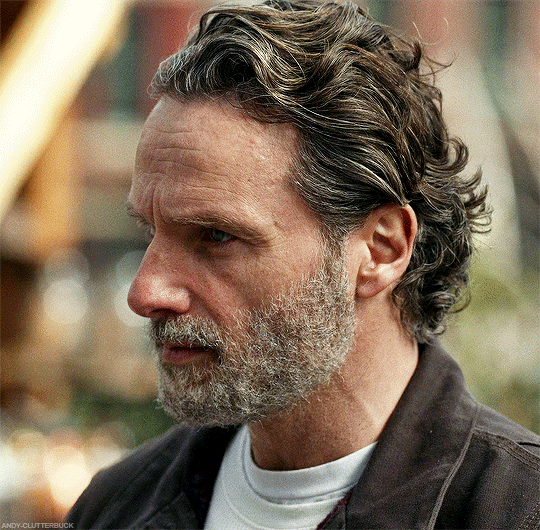#Gray Board
Text
'Popular responses to Christopher Nolan’s latest cinematic offering, Oppenheimer, have generally been positive, with the film generating unexpected commercial success given its length and subject matter. However, audience opinion has been polarized regarding the film’s political implications, bifurcating in accordance with the lines along which people have interpreted its ideological content. Some have read Oppenheimer as an indictment of its titular character, typically praising the film for not shying away from the physicist’s personal shortcomings (like his arrogance or infidelity) or attempting to justify them.
For them, the film also shows Robert’s complicity in the most devastating war crime ever committed by foregrounding such details as his justification for continuing the Manhattan Project post-Hitler’s suicide and his refusal to sign Leo Szilard’s petition against dropping the bombs on Japan. Another strand of popular discourse, however, has gone the other way and accused Nolan of whitewashing the image of J. Robert Oppenheimer by de-emphasizing the horrific outcomes of his actions (such as by keeping the harrowing images of Hiroshima and Nagasaki offscreen) and portraying him as skeptical when it comes to atomic weaponry by glossing over his moral culpability in making them possible.
For this latter camp, the film’s decision to utilize Oppenheimer’s victimization at the hands of the Gray board as a framing device to bookend the narrative meant a shift in perspective from ‘Oppenheimer as perpetrator’ to ‘Oppenheimer as victim.’ For still others, the film has seemed to be a balancing act between these two contradictory tendencies, with the criticism and the sympathy canceling each other out to varying effect: for some, a fair representation of a complicated historical figure, while for others, a politically-toothless blockbuster looking to cover all bases.
Despite the differences between these positions, the common axis around which they revolve concerns a moral assessment of Oppenheimer as an individual, both as a man sustaining frayed personal relationships and as the physicist who made nuclear warfare possible. The film gets read merely as an exploration of Oppenheimer’s guilt, with opinions differing as to the success or failure of the depiction. The questions implicitly posed by such discourse tend to be of the following type: How are we to think of Oppenheimer and his legacy more than eight decades after the inception of the Manhattan Project? How should history judge this complicated figure, and what lessons could we draw regarding brilliant (but flawed) individuals occupying positions of power during times of global crisis?
Such considerations, while valuable, nevertheless seem too restricted to the level of the individual and inevitably miss the most crucial point to be derived from Oppenheimer, one underscored by its closing scene involving an ominous exchange between Oppenheimer (Cillian Murphy) and Albert Einstein (Tom Conti) at the Institute for Advanced Study in Princeton. “When I came to you with those calculations, we thought we might start a chain reaction that would destroy the entire world,” says Robert, recalling a previous meeting between them.
Einstein confirms that he remembers the meeting well, and then Oppenheimer’s spine-chilling follow-up comes: “I believe we did.” The film ends with a montage of nuclear warheads launched, eventually engulfing the planet and triggering atmospheric ignition, cross-cutting with grief-stricken close-ups of Cillian Murphy’s face. Of course, Oppenheimer doesn’t refer here to having started an actual nuclear reaction and set fire to the atmosphere, which was the genuine worry at hand during his prior meeting with Einstein. Instead, he draws a revealing parallel between nuclear weapons and the scientific-military-industrial complex that facilitates them by analogizing the chain reaction that characterizes them both–forever threatening to spiral out of control with catastrophic consequences.
In these final images of the film, the fear and grief writ large on Oppenheimer’s face thus have little to do with either atmospheric ignition or even the specific dangers posed by nuclear weaponry. They reflect, instead, his confrontation with a final revelation – one that comes perhaps too late in his own life. It’s an acknowledgment of the tragic course taken by scientific reason in general (“the culmination of three centuries of physics,” as his colleague Isidor Rabi put it), which seems to lead inevitably to a paradox through its weaponization. The grand institution of science and technology, long heralded as the flagbearer of enlightenment rationality and progress, seems to produce scenarios that violently contradict its own utopian ambitions with the existential threats it generates.
The more pertinent questions raised by the film then become the following: How come “three centuries of physics” ultimately lead to a paradoxical scenario where its progress becomes the foundation for an existential threat, despite peerless geniuses like Oppenheimer and Einstein being fully cognizant of such dangers? And what does this indicate regarding our pursuit of technological progress itself, usually widely accepted as an unquestioned universal good? This essay shall probe such questions through a reading of Oppenheimer, which aims to bring forth and examine these fundamental contradictions (mirrored by the film’s contradictory characterization of Oppenheimer himself) and thus interpret the film as an alarming representation of the tragedy afflicting the very heart of our project of scientific-technological modernity.
The Tragic Subject of Oppenheimer
As the film opens with Oppenheimer reading his statement to the members of the Gray board security hearing, the first introduction we get to this character is through a flashback to his days spent at Cambridge, where he attempts to poison his tutor Patrick Blackett (James D’Arcy) with a cyanide-laced apple after being antagonized for his subpar laboratory work. This early instance of a young Robert responding under duress and lacking control over a situation almost instinctively with the urge to kill seems to foreshadow his eventual historical legacy–as the man fated to spearhead the single most violent act of death and destruction in human memory.
It’s tempting to read this sign as indicative of the ‘tragic flaw’ within Oppenheimer, which, despite his best intentions, sets him down a dark, winding path and ultimately becomes his undoing. But, as we shall see, such attempts to locate the roots of tragedy within Oppenheimer, arising from his personal attributes, would be to misrecognize how the tragic element manifests across the film’s narrative.
As per the classic Aristotelian theory of tragedy, hamartia (most commonly translated as ‘tragic flaw’) is responsible for the series of events affecting a movement from a state of felicity to disaster for the tragic hero, bringing about their downfall. Traditionally, hamartia has been understood to be some inherent character defect that gets in the way of the (otherwise virtuous) hero’s attempts to retain control over their fate and, as such, the possibility of depicting the downfall of a wholly virtuous (or villainous) character, as tragedy, was ruled out.
Later critics like Jules Brody have contested this interpretation of hamartia and insisted that it be understood as a morally neutral term, indicating a chance accident. It’s deemed an unforced error that leads the hero to ‘miss the mark’ (literal translation of the verb hamartanein). Like an archer inadvertently missing their mark, not due to lack of trying or inherent moral deficiency, tragedy manifests as a contingency that unalterably sets the course towards downfall. As opposed to the classical notion, this interpretation of hamartia emphasizes its externality and autonomy relative to the character: tragedy, in this vein, is that which strikes not because one is inherently flawed (for then their downfall is merely the comeuppance they already deserved) but due to something that lies radically outside the bounds of one’s will.
However, neither of these two interpretations of hamartia fits the tragedy of Oppenheimer, for they oscillate between locating it either entirely within the character or entirely without them while positing the character’s actions as the site where the tragic element takes root. To take the classic example of Oedipus Rex, where Oedipus fails to recognize his father Laius at the crossroads and kills him, the tragic error is attributed either to Oedipus’ hasty behavior because of his hubris (as per the classical notion) or to sheer bad fortune. But in both cases, it’s something that Oedipus (and Oedipus alone) does that actualizes the tragedy.
In both cases, Oedipus’ actions evince regret in him, and if he could’ve gone back in time and done things differently, it’s clear that he would’ve avoided slaying the man he meets at the crossroads. This isn’t true, however, for Oppenheimer. As the character of Lewis Strauss (Robert Downey Jr.) reminds us, Robert never once admitted to having regrets over Hiroshima and that “if he could do it all over, he would do it all the same.” Admittedly, the latter claim isn’t a factual observation but something that Strauss rhetorically puts forth to make his case against Robert. Still, it does lead one to wonder: What precisely could Dr. J. Robert Oppenheimer have done differently, had he the chance to turn the clock back, so as to effect any different outcome?
He certainly couldn’t have stopped the nuclear race from ever starting, for that becomes inevitable the moment the atom is split by scientists in Nazi Germany and, a year later, World War II breaks out. Perhaps he could’ve more strongly opposed the decision to bomb Japan. Yet this argument misses the fact that the hindsight with which we now assert that the Japanese surrender wasn’t due to the bombs but rather the USSR’s entry into the war on 9th August 1945, was not something that was prophetically available to Oppenheimer who, like his fellow scientists, could only act based on information fed to him by the US military. Further, it is known that Generals Eisenhower and MacArthur, and even Truman’s chief of staff Leahy, went on record to condemn the atomic bombs as “either militarily unnecessary, morally reprehensible, or both,” and yet Truman went ahead anyway.
It’s fair to say that a “humble physicist” like Oppenheimer, especially with his personal “questionable associations,” could have done little to sway Truman. This isn’t to absolve Oppenheimer of all personal responsibility or claim that he always acted ideally. But it is to assert that the question of the violent trajectory taken by scientific rationality–culminating in nuclear weaponry but certainly not restricted to the bombings in Japan–cannot simply be reduced to the individual decisions taken (or not) by Oppenheimer (and other scientists like him), regardless of whether these decisions were motivated by inherent tragic flaws or brought about by chance circumstances.
We thus note how the existing notions of hamartia are ill-equipped to adequately account for the tragedy of Oppenheimer and preclude the possibility of deriving a politicized critique: the classical notion attributes all responsibility to the individual afflicted by the tragic flaw. In contrast, the latter notion leaves it all to accident. What’s necessary here is a way of configuring hamartia that situates it neither entirely within a character nor without them. Instead, it accounts for the dialectical relationship between inner subjectivity (acting upon outer reality) and external structures (determining and constraining the subject from within).
After all, the ‘tragic flaw’ manifests as most tragic precisely when it appears to be located within, leading us to proclaim the character as inherently flawed, even as its ultimate genesis lies elsewhere. Hamartia, in this case, must thus be located as being extimate to the character – deriving from the Lacanian concept of “extimacy,” a portmanteau of the two mutually contradictory words “external” and “intimacy.” Extimacy refers to a dissolution of the usual demarcation between interior and exterior and thus reframes the question of hamartia – no longer understood as some moral deficiency but rather as a mode of subjectivity volitionally adopted by the character as their own, but which nevertheless is founded in the external structure that produces the subject.
To view the ‘tragic flaw’ in the narrative as extimate to Oppenheimer is to insist that it operates through him, even as its origins remain radically outside him. As shall be discussed in the next section, this shows up in the film as Robert’s significant psychical investment in Enlightenment-era rationality–as embodied in the ideals of scientific progressivism and bureaucratic due diligence–a structure of which he is a product through and through. As the film unfolds, this structure unravels for Oppenheimer to reveal at its heart a gnawing irrationality, manifesting through his often contradictory behavior as well as the rising sense of a loss of control (which Einstein also brings up in the final scene) and the tragic realization of his own helplessness in the face of it all.
Enlightenment and its Discontents
Regardless of the wide variety of opinions out there regarding Oppenheimer, there seems to be a near-universal agreement in describing him as a deeply contradictory character, something that Nolan’s film also evokes in numerous ways. Edward Teller’s (Benny Safdie) testimony of Robert’s actions as “confused and complicated” may not have been entirely fictional, and we see how the Gray board leverages the apparent contradictions in Oppenheimer’s behavior (like his shifting position with respect to the H-bomb) to persecute him.
Additionally, Robert often behaves in ways that undermine his personal position, like admitting to prosecutor Roger Robb (Jason Clarke) that the communist Haakon Chevalier (Jefferson Hall) is still his friend. We also see him arguing more than once that the scientists’ role as creators of the bomb does not give them any greater right to dictate whether it’s used, even as we see him doing precisely the same while convincing his colleagues of the need to unleash the bomb despite Nazism no longer being a threat.
Oppenheimer’s contradictions can only be fathomed if we first recognize that he’s a Kantian liberal subject through and through, implicitly following the rational framework elaborated by Immanuel Kant in his seminal essay “What is Enlightenment?”. The path to Enlightenment, Kant wrote, lay in maintaining a clear separation between private and public uses of reason and in having a state form that freely allowed the maximization of both. Put simply, the difference is as follows: private use of reason refers to executing one’s assigned duties in the specific role (teacher/scientist/lawyer/banker, etc.) one occupies within civil society, whereas public reason refers to performing one’s greater duty towards society as a whole, i.e., by speaking out and protesting, according to one’s convictions, against that which threatens the so-called “common good.”
With the one hand, you oil the wheel that turns (for that is your job), and with the other, you mend the spokes that are broken –this seems to be the model of Enlightenment rationality that also governs Oppenheimer. “Argue as much as you like and about whatever you like, but obey!” wrote Kant, his blueprint acting as an injunction to people to speak out against the status quo as and when necessary, but not at the cost of neglecting their duties (for without the latter, society itself would break down).
One clearly sees this tension between ‘arguing’ and ‘obeying’ play out in the film through (among other things) Oppenheimer’s engagement with the communists, neither officially joining them nor entirely giving up on their cause. Oppenheimer is quick to ‘argue’ alongside his fellow members of the F.A.E.C.T when it comes to showing solidarity with “farm laborers and dock workers” and insisting that “academics have rights too.”
He is also quick to ‘obey’ when Lawrence (Josh Hartnett) convinces him of the need to tone down his political activity so that he can do his duty, showing the ability to be “pragmatic.” It’s fascinating to see how Robert goes out of his way to inform the authorities about Eltenton (Guy Burnet) because it’s his duty as a law-abiding citizen to report espionage attempts. Yet, he also resists the persistent Colonel Pash (Casey Affleck) to keep Chevalier’s name concealed, spinning lies that would return to hurt him later.
In fact, Robert’s lifelong commitment to ‘arguing,’ i.e., not letting the exigencies of private ends trammel over public reason, is precisely what separates him from Lewis Strauss, whose perspective is taken up in the parallelly-running storyline shot in black and white. While Strauss has spent his whole life climbing the social ladder by greasing the right palms and pleasing the right people, Oppenheimer, in contrast, was (in)famous for speaking his mind (almost to the extent of seeming arrogant) and standing up for causes he believed in, regardless of potential political backlash.
It’s telling that when the senate aide (Alden Ehrenreich) was pushing the question of who targeted Oppenheimer and why, Strauss mentions that “Robert didn’t take care not to upset the power brokers in Washington” (which undoubtedly Strauss always took care to), before recounting the tale of his humiliation in the case of exporting isotopes to Norway. Oppenheimer’s real ‘crime,’ for which Strauss takes it upon himself to punish him, lay in this insistence on always keeping private and public reason separate and for not backing down on his stance against further nuclear armament or paying enough importance to influential individuals to bow to them. His folly, perhaps, lay in thinking that the state structure was rational enough to tolerate the same.
Underlying this two-pronged mode of rationality that Oppenheimer embodied is the assumption that the exercise of reason can act as it’s own corrective, i.e., the threat of rationality leading us into error and excess is countered by rationality itself, in recognizing such dangers and undertaking appropriately rational countermeasures. Yet this would be to presume a state form that also functions rationally, where private and public uses of reason can be kept separate, which is only possible in an age of globalization under the aegis of something akin to “world government” as Lewis Strauss puts it in the film, which Oppenheimer imagines functioning through “the United Nations as Roosevelt intended.”
However, nearly two centuries after Kant, the world in which Oppenheimer finds himself is ruled by division and strife, where the imagined separation between private and public usage of reason often collapses – such as when it becomes the very duty of scientists to help fashion weapons of mass destruction, which contradicts their greater responsibility as rational agents to society at large. The Kantian model presupposes a state form that allows for both obedience and argument and thus leads to contradiction in situations where argument itself amounts to disobedience, like when Oppenheimer’s continued opposition to the H-bomb project is framed as a betrayal of his patriotic duties.
Nolan’s film shows us how nation-states’ fractured and warring imaginaries constantly undermine the promises of Enlightenment rationality – promises of scientific progress and peaceful prosperity – both on micro and macro scales. One of the dominant antagonisms staged throughout the film is between the US military’s policy of compartmentalization and the values of transparency and open communication that are key to the institution of science. “All minds have to see the whole task to contribute efficiently,” as Oppenheimer tells General Groves (Matt Damon), which really applies not just to the scientists working at Los Alamos but also to humankind in general, engaged in the Enlightenment project of reaping the benefits of scientific progress while protecting against its dangers. All humanity, setting aside mutual differences, must together see to dangers that threaten us on a planetary scale, whether nuclear bombs or the worry of climate change.
The essence of compartmentalization, which lies in damming the tendency of knowledge and information to circulate freely, shows itself to be irrational insofar as it seeks only to further private interests (in Oppenheimer’s case, that of the US military) at the cost of public ones. As Oppenheimer discovers, to his great horror, his hopes of international cooperation preventing the nuclear race from spiraling out of control seem utterly fanciful given the utmost hostility between the two world superpowers. The contradiction is made explicit with great force in the scene where Oppenheimer meets President Truman (Gary Oldman). He assures the President that the Soviets, too, have abundant resources to build a nuclear arsenal, hoping his reasoning sufficiently convinces the President to shut down Los Alamos and enter arms talks with the USSR.
In response, Truman’s Secretary of State James Byrnes (Pat Skipper) takes Robert’s observation to conclude the exact opposite, arguing that the USSR’s nuclear potential means that they have to “build up Los Alamos, not shut it down,” which shows how incompatible Oppenheimer’s rationality is within such a fundamentally irrational state. At this moment, Robert realizes the error he has been led to with his investment in Kantian rationality, its inherent contradictions growing steadily apparent, as he remarks to the President, “I feel like I have blood on my hands.” It’s one thing to imagine this blood to be representative of the deaths at Hiroshima and Nagasaki, massacres which (as previously discussed) Oppenheimer wasn’t entirely responsible for and nor could have prevented singlehandedly.
But insofar as the line follows Byrnes’ conclusion, the blood on Oppenheimer’s hands should indicate something far ominous: that is, his involvement within the institution of science and technology – itself a part of the greater Enlightenment project of modernity – leading to a scenario where he has given humankind “the power to destroy themselves,” as Neils Bohr (Kenneth Branagh) puts it. The idea of Enlightenment, a word referring to the state of being illuminated, of the production of light to cast out darkness, thus attains perversion in the spectacle of the atomic explosion–popularly held to be “brighter than a thousand suns”– which paradoxically for Oppenheimer back then also necessarily represented the zenith of scientific progress that he had helped reach.
Technology as Revelation
That the zenith of scientific progress should appear as an act of bringing to light in Oppenheimer perhaps hints at something of the essence of this act of putting science into use, of “taking theory and turning it into a practical weapons system,” as Robert tells Groves. For the German philosopher Martin Heidegger, the essence of technology lay in revelation–understood as the movement from a state of concealment to unconcealment. “Technology is a mode of revealing,” wrote Heidegger in his essay “The Question Concerning Technology,” referring to how science apprehends the natural world to bring forth what would have eluded us otherwise.
We need only think of some of the earliest examples of human technology to get the point across: the harnessing of fire, for example, reveals the nutritional value concealed within plants and animals to be used as sustenance, while the plow that turns the earth reveals the fertility of the soil that’s otherwise inaccessible. It was crucial for Heidegger that we do not fall into the usual trap of imagining technology as something neutral in itself, as merely instrumental means to ends, its purpose defined entirely by how humans use it. To imagine technologies as disparate as the windmill and the atomic bomb as mere instruments at the mercy of humans, while not technically incorrect, reduces them to a false equivalency that obscures their vastly differing essences.
More importantly, it obscures their telos, i.e., their ultimate (intended) purpose, which must also be held responsible for their creation in the first place, for no one imagines that the telos driving the manufacture of windmills and atomic bombs to be anything similar. Thus, for Heidegger, it’s important that we apprehend technology’s essence as ‘revelation’ so that we may better appreciate how the technologies we use constrain (and are constrained by) the realities they bring forth. Revelation in this manner, for Heidegger, thus involves a “bringing-forth,” i.e., something is brought forth from obscurity and into sight. The windmill, for example, can tap into currents of air and bring forth the same as electrical currents, which can then be harnessed as electricity.
The idea of technology as a mode of revealing is acknowledged most directly in Oppenheimer during the scene where Secretary of War Henry Stimson (James Remar) discusses dropping the bomb on Japanese cities, and Robert describes it as “a terrible revelation of divine power.” That the bomb’s power is defined as divine (god-like and thus not of the world of humans) is, of course, no mere coincidence, and harks back to the now-infamous line from the Bhagavad Gita quoted by Oppenheimer, “Now I am become Death, the destroyer of worlds,” typically misunderstood to imply Robert’s identification with the figure of death, given his role in pioneering the atomic bomb.
In the Gita, however, it is told to Arjuna by Krishna, the latter taking on the form of Vishnu’s multi-armed self and thus refers to a moment of identification between death and divinity. Death appears to Arjuna in the form of Vishnu (and to Oppenheimer in the form of the atomic explosion) as something terribly divine, something so otherworldly that he, a mere mortal, cannot possibly hope to comprehend or control it. Later, following the Hiroshima bombing, we hear Truman on the radio describe the bomb as “a harnessing of the basic powers of the universe.” Read together, the technology of the atomic bomb can thus be described as a harnessing of the basic powers of the universe so as to effect a revelation of divine power.
The paradox becomes apparent: what’s harnessed is that which belongs to the fundaments of this world, even as what’s revealed feels like something otherworldly (transcending the limits of the human) – as if to imply the presence of the otherworldly (albeit concealed) within the very building blocks of our reality. Once again, we have here a relation of “extimacy,” in that technology takes the base matter of our world (its natural resources and the physical laws governing them) and contrives it to reveal something that appears external to us insofar as it threatens to exterminate the world.
It is this trait of modern technology, as seen most visibly in atomic bombs but certainly not limited to them, to ultimately objectify its subjects (i.e., human beings), becoming external and even opposed to them concerns Heidegger. He characterizes the logic governing modern tech as a “challenging-forth,” a “setting-upon,” that separates it from older technology where the revelation involved was merely a “bringing-forth.” He contrasts the windmill, which simply taps into air currents already flowing, with the modern activity of coal mining: “. . . a tract of land is challenged in the hauling out of coal and ore.
The earth now reveals itself as a coal mining district, the soil as a mineral deposit”. The difference between the windmill’s “bringing-forth” and the coal miner’s “challenging-forth” is that the former resembles receiving gifts from Mother Nature doled out generously. At the same time, the latter is active exploitation of nature, motivated by the single capitalist logic of “maximum yield at minimum expense.”
Revelation as “challenging-forth” thus affects a pretty different kind of unconcealment that Heidegger describes: “Everywhere everything is ordered to stand by, to be immediately on hand, indeed to stand there just so that it may be on call for a further ordering. Whatever is ordered about in this way has its own standing. We call it the standing-reserve”. The phrase derives from the idea of standing armies forming the military reserve forces. It refers to a peculiar ordering of natural elements wherein they stand by, at hand, and ready for use instead of being freely scattered within the world in their natural forms.
Oppenheimer neatly illustrates the idea through the recurring imagery of spherical glass bowls being gradually filled with marbles, representing increasing quantities of refined uranium and plutonium, standing by, ready to be used as fissile material. This process represents how science and technology reveal the contents of our world as mere means, as things to be used to achieve our desired ends, and not as ends in themselves. The logic of technology subjects humans to a view of the natural world as something that exists only for the purpose of being harnessed for profit, overriding the idea of its existence in its own right.
The problem with this logic of turning nature into the “standing-reserve” is, of course, that eventually, it extends to humans themselves – humans who, as part of the same natural world, are also made part of the “standing-reserve” of science and technology. “The current talk about human resources, about the supply of patients for a clinic, gives evidence of this,” writes Heidegger. It is to effect a depreciation in the value assigned to humanity itself. It marks that moment wherein technological revelation starts appearing as something external to humanity – external insofar as technology now seems turned against humans themselves and thus out of their control. Indeed, that is how the “terrible revelation of divine power” must have appeared to the hundreds of thousands massacred at Hiroshima and Nagasaki, who became mere fodder for imperialist war games and who tellingly don’t appear in Oppenheimer except in the form of mere statistics.
Modern technology, thus, as a form of revealing that “challenges-forth” and turns nature into the “standing-reserve”, contains within itself a paradox: As humans keep utilizing scientific knowledge to exploit the natural world for profit and using the profit to further its technologies to better exploit nature (not unlike a chain reaction), eventually the logic of natural exploitation – now magnified manifold – threatens to engulf humankind itself.
Perhaps the most tragic aspect of Oppenheimer is the realization that this existential threat is not well appreciated until it gets displayed in some form, as when Robert justifies continuing the Manhattan Project despite Hitler’s death, claiming this would encourage deterrence. By insisting that “they won’t fear it until they understand it, and they won’t understand it until they’ve used it,” Oppenheimer directly invokes the logic of revelation–for if technology is a mode of revealing, as Heidegger insists, it seems like the culmination of technological progress must consist in the revelation of its own catastrophic potential, so that we may learn to curb the same before it’s too late.
Oppenheimer beyond Oppenheimer
In an interview about the film, Oppenheimer’s co-producer Emma Thomas describes it as a “cautionary tale,” hoping it leaves viewers with more troubling questions than straightforward answers. But it’s hard to see how Oppenheimer can function as a cautionary tale as long as the discourse around it centers on an assessment of Oppenheimer himself and the story of his moral culpability and guilt. Understandably, popular opinion has fixated upon the depiction of the individual more so than anything else, given that Oppenheimer has been marketed as a biopic. Additionally, the buzz around Nolan’s decision to write his screenplay in the first person so as to tell the story from Oppenheimer’s subjective perspective undoubtedly contributed to prejudice regarding the film’s ambitions, shifting the focus to the man himself rather than the story unfolding around him.
But what this decision does for the film is actually quite the opposite, i.e., by locking the viewer onto Oppenheimer’s perspective, the film eschews a moral judgment of Oppenheimer himself (for that requires us to view him objectively). It encourages a questioning of the structures that made this tragedy possible. In watching the film, the audience is made to feel like “we’re on this ride with Oppenheimer” (as Nolan put it), and this formal identification with the protagonist dissuades attempts to make it all about him, as has primarily been the case with previous attempts at telling the story of the atomic bomb. The idea isn’t dissimilar to the proverbial walking of a mile in someone else’s shoes, which indicates a movement away from making that person the sole object of one’s critique.
It is here that popular discourse around the film, centering on a moral judgment of Oppenheimer and his guilt, falls short: the more significant point alluded to by the film’s closing moments isn’t about whether Oppenheimer was the devil for having commandeered the Manhattan Project to success or a saint for advocating arms control. It certainly isn’t about the role of individual responsibility in overseeing projects of seismic importance (as if a different set of personnel could’ve ensured a different historical outcome). It’s easy enough to investigate some tragic event and have the buck stop with some individual figure to arrive at some scapegoat upon whom responsibility is pinned in order to be relieved of the labor necessary to interrogate systemic factors that keep reproducing such tragedies.
To the extent that Oppenheimer portrays its titular character as flawed, it’s also careful to show us that Robert himself was acutely aware of his flaws and felt remorseful. And as his friend Chevalier notes: “Selfish and awful people don’t know they are selfish and awful.” But it’s precisely by presenting this sympathetic portrayal of the man Oppenheimer that the film encourages a more careful reading of his position within the scientific-bureaucratic apparatus, one that transcends individual specificities, suggesting a sense of fatality with which the events of the movie are tainted and imploring us to derive a critique of this apparatus itself.
Of course, the film is about Oppenheimer’s life and work and depicts the same in detail, but this focus on the man himself is not an end in itself but merely the means to get beyond the man and explore what made, drove and ultimately tormented him. Paradoxical as it may sound, given the film’s text, the title of Oppenheimer may be less of a reference to the famous physicist himself and more of an indication of the historical subject position that was once occupied by Robert but now endures despite him.
In numerous interviews, Nolan has mentioned how scientists working in AI often refer to the current AI explosion as their ‘Oppenheimer moment.’ In revisiting and rethinking the story of the nuclear bomb, perhaps it’s time that we stopped obsessing over what Oppenheimer could or should have done differently and instead broach the question of how such ‘Oppenheimer moments’ arise in the first place and how to tackle them. How come new developments in science and technology often strike us with fear and alarm when we should be rejoicing in the potential benefits they could bring us all? How come when news of developments in computerization, automation, and AI technologies hit the stands, the popular reaction is often one of dismay, stemming from fears of losing livelihoods rather than one of celebration?
“Prometheus stole fire from the gods and gave it to man; for this, he was chained to a rock and tortured for eternity,” the movie’s opening frames inform us. Going by the film’s narrative, it’s easy to imagine that this refers to Oppenheimer’s persecution by the Gray Board under the animus of Lewis Strauss. But Prometheus was punished by the gods from whom he stole fire, not by men. Neither was Prometheus punished for regretting and having hopes of going back on his act, which happens in the case of Oppenheimer and the bomb. So, the ‘torture’ referred to in the quote has nothing to do with the tarring and feathering Oppenheimer undergoes throughout the film, culminating in him losing his security clearance for trying to minimize the fallout from his invention.
Instead, the idea of ‘stealing fire from gods’ in Oppenheimer’s case refers instead to the laws of physics and their harnessing by the institution of science and technology, which gives men such terribly divine powers as the atomic bomb. Being tortured for eternity, then, in this case, means living with the horror and fear that our technological progress can, at any moment, become our undoing. “Chances are near zero,” as we are told repeatedly, but that doesn’t stop Fermi from taking side bets on atmospheric ignition. It is this element of non-zero chance, this uncertainty that paradoxically (re)appears at the end of a long process of scientific inquiry and development based on values of certitude, that strikes as most tragic – that the hallowed project of gaining control over the natural world for human benefit has led to a real possibility of loss of control and human extinction.
In the film, Einstein astutely notes this to be a trait characterizing the “new physics” when Robert first comes to him with Teller’s troubling calculations, observing how they are “lost in your (i.e., Oppenheimer’s) quantum world of probabilities, and needing certainty.” But of course, it isn’t as if quantum mechanics itself introduces uncertainties into our world so as to destabilize it; rather, quantum mechanics – itself the culmination of “three centuries of physics”– only reveals the uncertainties that have long inhered in the world and in the scientific project itself, but which so far have remained concealed. Small wonder then that Bohr’s character insists that what they have is not just a new weapon but a new world.
Thus, rather than deriving a critique of Oppenheimer himself, a man long dead and gone, a far more fascinating and important discussion to be had from Nolan’s Oppenheimer would be regarding the ‘criticality’ of scientific reason itself. The notion of criticality, as used in the film, refers to that stage during which a nuclear chain reaction becomes self-sustaining, beyond which it becomes ‘supercritical’ and proceeds towards explosion. The institution of science in today’s world is similarly self-sustaining insofar as its narrative of technological progress requires no additional justification, insofar as even our response to science’s dangers usually tends to be more science.
Like a chain reaction, scientific progress feeds capital, which in turn feeds science and so on – a juggernaut advancing so autonomously as to almost be insulated against external criticism and the possibility of applying brakes. And carrying with it, all the time, the risk of ‘supercriticality’ – from CO2 emissions causing global warming to developments in AI causing job losses or worse, and so on. It’s precisely this tragic course of events, from rationality and control to irrationality and loss of control, irreducible to the individual and instead requiring deeper systemic interrogation of the fundamental assumptions underlying technological modernity, that Oppenheimer allegorizes in its tale of the atomic bomb and the man who fathered it.
The film lays bare the irrationality at the heart of the Enlightenment project of scientific progress and the paradoxes it leads to, mirrored by the paradoxes of the quantum world and manifesting in Oppenheimer’s contradictory subjectivity and the final tragic realization that despite his crucial role in the making of the bomb there was perhaps very little he alone could have done to change the course of history, a history that through his participation he also helps actualize.'
#Oppeneimer#AI#Emma Thomas#Albert Einstein#Christopher Nolan#The Manhattan Project#Leo Szilard#Cillian Murphy#Tom Conti#Institute for Advanced Study#Princeton#Isidor Rabi#Gray Board#Patrick Blackett#James D'Arcy#Lewis Strauss#Robert Downey Jr.#Edward Teller#Benny Safdie#Haakon Chevalier#Jefferson Hall#Roger Robb#Jason Clarke#Ernest Lawrence#Josh Hartnett#Boris Pash#Casey Affleck#George Eltenton#Guy Burnet#Alden Ehrenreich
3 notes
·
View notes
Note
Are you comfortable opening up about your possession experience?
Alright. I am now.
I've written a little about it. You can find it if you search "gray board" in my blog:
***

***
It's like a metaphor or symbol, you know? But it made me want to destroy myself one day and I didn't recognize that as "myself". Still struggling with it. It's like that weird scenery in the movie "The 7th continent":

7 notes
·
View notes
Text

Eastman Johnson (1824-1906)
"Gathering Lilies" (1865)
Oil on board
Located in the National Gallery of Art, Washington DC, United States
#paintings#art#artwork#genre painting#genre scene#eastman johnson#oil on board#fine art#national gallery of art#museum#art gallery#female portrait#portrait of a woman#gray dress#grey#brown#dresses#clothing#clothes#pond#garden#green#1860s#mid 1800s#mid 19th century#a queue work of art
519 notes
·
View notes
Text



ꉺ ̈✿ ʅ ⠀͟ ꫶ࣺ᭮᭰͟͟͟͟͟ ㆁ̴̶̷̤́ 月13日 ⠀⠀⠀⠀ ᪇ꫭ ⠀⠀ྀི❤︎⠀⠀⠀⠀⠀⠀⠀when you 잠 .






#❀ ✟ :*・゜゚・* ✿ֶ⠀ᩙ *・゜゚・*: ✟ ❀#moodboard#alternative moodboard#mb alt#kpop messy#kpop layouts#kpop moodboard#messy bios#edgy moodboard#clean moodboard#angelcore moodboard#aesthetic layouts#visual archive#mood board#blue moodboard#green moodboard#gray moodboard#brown moodboard#white moodboard#jennie blackpink#bp jennie#jennie moodboard#jennie icons#jennie#messy layouts#black pink moodboard#black pink#coquette moodboard#gg moodboard#instagram moodboard
848 notes
·
View notes
Text








#gray#silver#silver tresses#black girl moodboard#goddess energy#moodboards#aesthetic board#luxury aesthetic#my moodboard#black girl aesthetic#black women#black femininity#nsfq#black women in femininity#hair inspo#hair aesthetic#gray hair#rich bitch
784 notes
·
View notes
Text
why cant i be a 20th century schoolboy studying shakespeare with his group of morally grey friends
#just a 1900s boarding school boy with his close totally platonic friends#if we were villains#the secret history#dark academia#shakespeare#classics#dead poets society#picture of dorian gray#dorian gray#morally grey
3K notes
·
View notes
Text









a stimboard that wont give you up, let you down, dessert you, make you cry, say goodbye, tell a lie or hurt you!
🕴🏻 /🎤/ 🕺 / 🌪️ / 👨🦰 / 🌪️ / 🕺 / 🎤 / 🕴🏻
#stimboard#stim board#stim#joke stim#anti stim#cursed stim#meme stim#rick roll#rickroll#rick astley#never gonna give you up#body stim#dancing#tap dancing#mic#microphone#soft#blanket#cozy#suit#clothing#black#gray#light gray#white#gold#silver#april fools
265 notes
·
View notes
Text






(❀ ˘˘) ⌢ ₊ 📷



#﹪ ﹪ ﹪ ﹪ ﹪ ﹪ ﹪#ㅤㅤ⠀ㅤ 𓇼ㅤ ㅤ𓂂ㅤㅤ ˚ㅤㅤ ◌ㅤ ͏͏͏ ͏͏͏ ͏͏͏ ͏͏͏ ͏͏͏ ͏͏͏ ͏͏͏ ͏͏͏ ͏͏͏ ͏͏͏ ͏͏͏ㅤ ͏͏͏ ͏͏͏ ͏͏͏ ͏͏͏ ͏͏͏ ͏͏͏ ͏͏͏ ͏͏#⟡ loc : yongloop#moodboard#alternative moodboard#mb alt#kpop messy#kpop layouts#kpop moodboard#messy bios#edgy moodboard#clean moodboard#angelcore moodboard#aesthetic layouts#visual archive#mood board#blue moodboard#green moodboard#gray moodboard#brown moodboard#white moodboard#go eunhyeok#operation true love#eunhyeok moodboard#go eunhyeok moodboard#eunhyeok#messy layouts#operation true love moodboard#operation pure love moodboard#coquette moodboard
320 notes
·
View notes
Text
the age-old discussion as to whether or not ben barnes was poor casting for dorian gray is incredibly funny to me like yes we know that dorian is supposed to look like an innocent blond cherub instead of a dark luciferian daddy long leg prince of sin because literature but it all comes down nitpicking in the end because i’m just sure that oscar wilde the man himself would have been salivating over ben every waking minute of his damn life if he were here
#oscar wilde told me this himself when i was using an ouija board#he said to me that the sun doesn’t rise in the east#it rises in ben barnes’ eyes#and that he liked the movie#it’s true#oscar wilde#the picture of dorian gray#dorian gray#dorian gray 2009#ben barnes#benjamin thomas barnes#dark academia#dark academia books#poc dark academia#english literature#english lit#classic literature#classic lit#english lit memes#classic lit memes#books and literature#book blog#books
1K notes
·
View notes
Text






james albin on yt | source
#talos gifs#stim gifs#stim#tech stim#technology#techcore#wires#hands free#circuit boards#robot stim#robotkin#multicolored#black#gray#metallic#blue#green#teal#purple#yellow#gif ids#id in alt#satisfying
231 notes
·
View notes
Text



The Ones Who Live | 1x03 - Bye
#THAT FACE IS THE ACTUAL IRON THRONE#Rick Grimes#*#rg#The Ones Who Live#EXCUSE ME BUT THE NOSE™#rogue neck fuzzies 💙#HIS N E C K#bram stoker is rattling my 90s ouija board i've got in the closet#he wants to talk#biting....things#after a particularly hard thrus-#who is talking?#shut up omg#you need jesus#lucky for you he's supposed to be back soon i think or something#it's not even Sinday#that T E N D O N#bless every line on your face#they're all beautiful and sacred#the waves#the flippy little curls at the ends#the grays!!#his ability to grow a gorgeous beard probably makes other men cry#his little scars#wearing entirely too many layer lbr
217 notes
·
View notes
Text
'In the first of many close-ups of J. Robert Oppenheimer (Cillian Murphy) in Christopher Nolan’s new film about the physicist, he’s a young student observing raindrops falling in a well. Murphy’s eyes wander tremulously, his perception of the external puddle prompting him to reflect. He’s a troubled student at Cambridge, isolated and homesick, sinking into depression. He’s aware of how any talents he has cultivated as a theorist are undermined by a lack of finesse in the laboratory. After his professor, Patrick Blackett (James D’Arcy), holds Oppenheimer back from seeing the visiting physicist Niels Bohr (Kenneth Branagh) deliver a lecture, the student injects the professor’s apple with cyanide. Oppenheimer attends the lecture and lies comfortably in bed that night, dreaming of both Bohr’s hidden quantum universe of paradox along with the more immediate bucolic comforts of his family ranch in New Mexico, where we see a horse being fed an apple. The image snaps Oppenheimer out of his reverie. He runs to the classroom, where Blackett and Bohr—who’s seized the apple and is about to bite—are in conversation. Oppenheimer grabs the apple from Bohr and throws it in the trash.
The biography American Prometheus by Kai Bird and Martin Sherwin (the basis of Nolan’s screenplay) makes mention of the apple episode, though it’s veiled with much uncertainty and secondhand speculation. Nolan mythologizes the incident, making it the basis of the film’s exploration of character and self-knowledge. As he steals away the apple, Oppenheimer offers an excuse to Bohr: “Wormhole!”—a good-golly physics pun, yes, but also a wink at this cause-and-effect framing, asking where the budding physicist may have ended up if he had not taken back the apple versus where he did end up, and the devastation his invention wrought. The apple, memorably framed in vivid close-up as the cyanide drips down the skin, has an Edenic reverberation after all. Innocence is destined to be lost.
This early section chronicling Oppenheimer’s development could be read as a not-too-subtle augur of how the atomic bomb’s creator would be judged for his part in the deaths of hundreds of thousands in Japan and for unleashing a weapon with the power to destroy humankind. In one particular close-up, young Oppenheimer’s eyes beam with electric intensity. As he looks toward the camera, the image is eerily suggestive of a mugshot. This close-up happens at a museum, as he stares at a Cubist portrait by Picasso, the shot-reverse-shot hinting at an echo of Oppenheimer’s own fragmentation in the painting. Art delivers the subject from his crisis to an absolving revelation: the artist’s oblique methods and transmutation of reality reveal how the world of limitless paradox and uncertainty isn’t only in the universe “out there,” but also within the mind’s recesses. Around this time we also see Oppenheimer listening to Stravinsky and reading Eliot’s The Waste Land (which, interestingly, was later described by William Carlos Williams as an “atom bomb” dropped on poetry). While not featured in the film, American Prometheus notes how it wasn’t a year and a half of psychotherapy that snapped Oppenheimer out of his depression. It was Proust.
Oppenheimer demonstrates that what could have been and what actually happened are similarly problematic; in both the definitive truth is elusive. While physics and modern art embrace the fragmentation and paradoxes of the universe, the obtuseness of the public record will not. In the face of the civilization-shattering “destroyer of worlds,” how do we justify our lives? This is the question that haunts the film, and is raised explicitly early on, as we meet Lewis Strauss (Robert Downey Jr.), former chairman of the Atomic Energy Commission and Oppenheimer’s main foil in the film, who readies himself for his 1959 cabinet confirmation hearing. Strauss speaks to an aide (Alden Ehrenreich) about Oppenheimer’s self-indicting testimony five years earlier. Dredging up incidents from both men’s pasts, the hearings of 1954 and 1959 demand that they “justify their lives”—not only to “history,” to be read in congressional documents (or major Hollywood motion pictures), but privately, to themselves. This is what makes Oppenheimer so unique as a historical biopic: it elevates its subject matter to a meditation on what is knowable—about history, about our own choices—and what it means to act responsibly in light of that fact.
Throughout Oppenheimer, we’ll see many more images of Oppenheimer gazing in wonderment, most famously at the terrifying fire of his atomic invention at the Trinity test site. As Oppenheimer stares into the explosion, he recalls a line from the Bhagavad Gita about the Eternal swallowing everything: Now I am become Death, the destroyer of worlds (an alternative translation is “Now I am become Time, swallower of all”). Language is inadequate to describe something so all-encompassing; narrative breaks down. We first hear this quote when Oppenheimer begins his romance with a young communist named Jean Tatlock, played by Florence Pugh. She has him translate the Sanskrit scripture—demanding that he not gloss it but read the words verbatim—in the middle of sex (scholars do have their kinks, after all). The meaning within that passage doesn’t need to be contextualized for us, but it’s later manifested in the hellacious light at Trinity. What we see at Trinity will indeed, to quote the John Donne sonnet after which it was named,1 “break, blow, burn” through all the quotidian habits, trophied accomplishments and window dressing distracting us from the looming dread. The bomb’s shattering sound catches up with the light, and after the being held so long in astonishment, the onlookers are knocked out of suspended awe and back into space-time.
For an audience, to be hurled back into space and time is to say we’ve safely returned to the conventional confines of movie plot. Between moments of chilling contemplation, Nolan’s film moves forward with a feverish briskness, stomping—sometimes clumsily—through the busy history it chronicles. The film has two interlocking narratives: the first, titled “Fission,” is shot in richly hued color and shows the perspective of Oppenheimer himself, in a sometimes experimental, stream-of-consciousness style. The second, “Fusion,” centers on Strauss and is more narratively straightforward, filmed in noirish monochrome. Nolan cuts between Oppenheimer’s journey toward the Trinity detonation and a pair of hearings: his security clearance hearing presided by the Gray Board in 1954, and the U.S. Senate’s confirmation hearing of Eisenhower’s Secretary of Commerce nominee, Strauss, who engineered Oppenheimer’s 1954 downfall. Because the film is so engrossing, the structure never comes across as a gimmick, instead playing like a natural reflection on themes of cause and effect, the chain reaction of events set in motion filtered through the problems of motive and memory, pointing to the difficulty of adequately assessing an individual and a historical moment. True, with all the film’s density of incident and character, one sometimes wishes that Nolan might slow down and let things breathe, giving his characters less rapid-fire, fact-laden talk, and I can’t help feeling his penchant for rushed scene transitions sometimes does his actors an injustice. But this splintering rapidity also seems to serve a purpose: underscoring the transience of ego in the longue durée of history. We see a murderer’s row of “that guy!” supporting players (Josh Hartnett, Rami Malek, Tom Conti, Josh Peck, Jason Clarke and so on)—all brilliant and distinguished, worthy of their own probing close-ups, but here merely impressionable faces consumed by the film’s own gravity, like stars sucked up into the darkness of one of Oppenheimer’s hypothesized black holes.
The quickly passing familiar faces ultimately lead us to the problem of historical assessment underlining Robert’s hearing. We can make snap judgments of these figures who will soon be sucked into oblivion, but in the meantime, we get so many faint glimmers of their hidden inner workings, which complicate easy analysis. Think of eccentric Kurt Gödel (James Urbaniak) staring up at Princeton’s trees, his fears of the Nazis as a refugee mentioned in passing; or the scorching visage of Colonel Boris Pash (Casey Affleck), who exudes malevolence as he tries to elicit names of leftist Berkeley faculty from Oppenheimer, though we soon learn his fanatical anti-communism goes back to what happened to his family decades ago in Russia. Or consider President Truman (Gary Oldman), whose rebuke of Oppenheimer’s “crybaby” qualms about dropping the bomb might seem cruel, but the solemn darkness in Oldman’s expression evinces that, in the recesses of private thought, he very much understands his decision’s moral weight. History books and movies can tell us what an individual did or said, and it’s up to later generations to make conjectures about what they really meant. But those interpretations have their limits: when attempting to grasp the mind’s labyrinth, even the most brilliant subject will get lost.
Instead of killing his teacher at Cambridge, Oppenheimer finds intellectual deliverance at Göttingen University, then at last returns to America as emissary of “the new physics.” Before long, World War II begins, and he’s chosen by General Leslie Groves (Matt Damon) to run the program where the atomic bomb will be created and tested. Oppenheimer sees a noble logic in its creation, as the bomb will lead to the ultimate Pax Americana, wherein godlike nuclear power will be so respected by a newly empowered United Nations that it will end all wars. As with some equations Oppenheimer works on, real-world evidence will reveal the limits of his most elegant theories: civilization will be at perpetual standoff, with billions of lives hanging by a thread. Later in the film, when his colleague and hawkish competitor Edward Teller (Benny Safdie) explains that things are much more complicated than Oppenheimer had supposed, he brings up Blackett—Oppenheimer’s would-be victim professor. Blackett, Teller says, had noted that Hiroshima would not be the last act of World War II, but the first act of the new Cold War. In Oppenheimer’s mind we see a snap-cut to Blackett biting into the apple: while our hero found a wormhole out of one grave scenario in the film’s prologue, he’s nevertheless landed in a much more dire and far-reaching one. The atomic bomb may have been inevitable, but either way Oppenheimer seems predestined to bring death.
The new physics postulates that everything is in flux, and Nolan’s Oppenheimer underscores how this applies not only to physical matter but to the certitude of human psychology and historical events, the very things historical tribunals—and historical films—aspire to define. During the 1954 Gray Board hearing, federal prosecutor Roger Robb (Clarke) tries to paint a definitive picture of Oppenheimer, showing that he has questionable associations and beliefs unfit for someone with a high-security position. Robb brings up damning evidence from twenty years earlier, including the Communist Party affiliations of Robert’s wife Kitty (Emily Blunt), brother Frank (Dylan Arnold) and close friend Haakon Chevalier (Jefferson Hall). Of most personal consequence, the proceedings bring up how Oppenheimer left Los Alamos in June 1943 to spend the night with Jean, who was going through a depressive crisis. As this last incident is detailed through transcripts and testimonies, the scene takes an unexpected turn: Oppenheimer is suddenly naked before the panel, and Jean—ten years removed from her suicide—is writhing on top of him. Oppenheimer is exposed not only to public scrutiny but also to Kitty, framed just over his shoulder. After the meeting is adjourned (and the hallucination has passed), Oppenheimer tries explaining to Kitty that he was under oath and what he said was nothing she didn’t already know. But, she fires back, “Today you said it to history.”
Kitty’s remark hits on the film’s conflict of public and private worlds, the linearity of one and the fragmented contradictions of the other. As Oppenheimer cuts back and forth between all these different scenes and settings, its braided storylines make the audience question whether any continuity can be found: Is who we once were who we are now? How do we act in the heat and influence of one time, and then later, in the measured calm of another? Is the would-be murderer Oppenheimer the same as the more abstract murderer who invented the atomic bomb? How ought we feel about him, considering how condescending he is to his brother Frank, how callous a husband he is to Kitty, how absent a father he is to his two children (in almost every scene with the Oppenheimer children we hear them crying), or how disloyal a friend, who—however much pressure he’s under—eventually gives up Chevalier to the feds? How should he—how should we—be judged?
Who then is this multitudinous, paradoxical figure at the film’s center? Oppenheimer shows a forthright commitment to his actions. What’s interesting is how consonant this is with the emphasis on dharma, or sacred duty, in the Bhagavad Gita. In a cosmic vision, the poem’s warrior prince sees Krishna’s manifestation as “destroyer of worlds” and learns he must put aside his moral scruples about the evils of war and instead surrender to the Eternal, committing himself to combat. Oppenheimer’s actions flow with a similar steadfastness, no second-guessing. Despite her rebukes, Oppenheimer will get Jean flowers. He will marry Kitty before her pregnancy begins to show—it’s what one does. He will give up leftist organizing to work on the bomb. He defies clearance because, he feels, he must. He has to visit Jean—a passionate communist—during her psychological crisis. He has to report the attempted espionage, which will lead to Chevalier’s downfall. And to fulfill a new World Peace that he believes the bomb’s power will ensure, he helps select the live targets it will be used on. Contrary to what Kitty says, his resigned demeanor during the hearing is not that of a martyr. It’s that of someone fulfilling an inner mandate.
And yet this sense of duty in Oppenheimer is paradoxical in that he is not ruled by any conviction, the way his peers seem to be. Edward Teller calls him “the sphinx of the atom,” adding, “Nobody knows what you believe. Do you?” He’s also open to being wrong, recognizing the limits of even the most elegant theory in practice. Oppenheimer’s character rhymes with the quantum world he’s unveiled, his movements and decisions like the beams of light in his quantum visions: sharp and brilliant but unruly, uncontainable and infinite.
Compare Oppenheimer to Lewis Strauss. When the film shifts to Strauss’s point of view, we see things in black and white, apposite for a hardline ideologue. Strauss, a “self-made man” who asks that his name be pronounced “Straws” (the grandson of Jewish immigrants, he has refashioned himself a Southern gentleman), is a stuffed shirt for whom public opinion takes precedence over poetry. Through the scrim of Oppenheimer’s literary influences, Strauss embodies Proust’s observation how our “social personality is a creation of the thoughts of other people”—or, in the language of the Bhagavad Gita, Strauss is stuck on satisfying his kāma, the ego’s desires. While Oppenheimer surrenders to his panel’s judgment like a Cold War Socrates drinking his hemlock, Strauss is furiously apoplectic, ferocious in his contempt for his rivals when his nomination is declined. When his post goes away, he’s nothing, and might as well be dead.
More than its structure and spectacle, what elevates Oppenheimer as a historical epic is how Murphy and Downey, Jr. inhabit their respective characters. Oppenheimer and Strauss are both said to have done their duty, though their psychological dispositions lead them to do so for very different reasons. Downey, Jr. is perfect as a jittery man of paper skin, defined by superficial accomplishments and high stature, the aspired ends of his public service. While Nolan’s close-ups of Oppenheimer draw us in, the shots of Strauss point outward: when we see him leave the Senate chamber in defeat, he is looking away from us and offering a phony bullshit smile to the press cameras, after which he will be relegated to a historical dumpster (from which only moviedom can resurrect him, some seventy years later). Murphy’s Oppenheimer, by contrast, is absolutely and wholly himself through every gesture and glance, though he understands how our quiddity resists the stamp of certainty. Some critics have reduced Nolan’s J. Robert Oppenheimer to little more than a conflicted conscience, but I think what makes this characterization memorable is its capaciousness. Oppenheimer is a man reconciled to the mystery of what we are as human beings. With his measured directness in movement and a watchfulness so acute that we feel how perception is itself action, Murphy comes to manifest what Oppenheimer told Edward R. Murrow in his 1955 CBS interview: “There aren’t secrets about the world of nature. There are secrets about the thoughts and intentions of men. Sometimes they are secret because a man doesn’t like to know what he’s up to if he can avoid it.”
Since his breakthrough Memento (2000), Christopher Nolan has followed, sometimes with a too-heavy hand, the recurring theme of how we dissociate from the truth of our lives in order to endure (Insomnia, The Prestige, Inception and certainly his three Batman films). With Oppenheimer this idea finds the subject he’s always been reaching for. The settings are dissociated from the outside world, as men in suits draw formulas, experiment, make plans and settle policy in neatly arranged government buildings, some constructed out of thin air like Los Alamos’s Spaghetti Western depot, when thousands of miles away the merciless meat grinder of World War II transpires. We do not see military combat in Europe or the Pacific, nor do we see the Japanese victims at Hiroshima or Nagasaki.
Nolan’s refusal to show the full fury of nuclear devastation has drawn criticism from critics who believe the victims’ experience must not be overlooked, but by suppressing the images of the carnage, Nolan forces the audience to imagine it, just as Oppenheimer must. During the film’s most haunting sequence, set in a gymnasium where Oppenheimer gives a speech celebrating Japan’s defeat, we experience an unsettling sense of displacement with him. The gymnasium speech begins conventionally, but both vision and sound bend in accordance with a new reality. The walls around have uncertain spatial dimensions, and the crowd’s cheers are unexpectedly swallowed by silence. Oppenheimer’s imagination projects his gadget’s power, with intimations—but, significantly, not lingering graphic representations—of molten skin and a body sunk into an ashen heap. Like the Trinity blast’s explosive sound and palpable force catching up with the holy light, the implications of a nuclear age rap on the door of our imagination. The scene’s discordant formal grammar expresses a jarring fragmentation akin to what Oppenheimer experienced with modern art. But the sequence—with overbearing visual and aural stimuli—hurls us out of art’s safe confines; the reliable cause-effect physics of Nolan’s narrative is broken open. (That Nolan’s daughter plays a molten burn victim we see in a fast close-up suggests a fourth wall breaking down, much like the walls behind Oppenheimer at the podium.) For all the time jumps up to this point, there was still a basic coherence to the story. Now time is out of joint, and the veil of space is cracked. After Trinity, we are in a frightening new world, with a new consciousness that we fight to repress. The unfathomable quality of the weapon—its danger and awesome power—extends to the workings of our own minds, what Proust called the “abyss of uncertainty.”
As both Oppenheimer and Strauss try—and fail—to justify their lives, the bomb’s malignant presence—despite the intensity of that deafening blast—is almost forgotten. The film gives us the catharsis of ostensible victory, with Strauss defamed in 1959, and Oppenheimer eventually redeemed, celebrated with honors by Lyndon B. Johnson in 1963. But the mind catches up with the dissociations of melodrama. We’re given one last close-up of Oppenheimer, again staring down at ripples on water that in his mind become expanding circles of fire on a helpless earth. The clamor of civilizations is drowned by fire and fallout. Everything—our loved ones and our rivals, petty politics and the flux of the discourse, the self-fashioned vanities of a world all too online, and the cultural banquets of a phenomenon like “Barbenheimer”—falls silent. Like Oppenheimer and the Picasso, the audience looks into this last close-up as another mirror, where we are drawn with centripetal force to our own horrific imaginings.'
#Oppenheimer#Cillian Murphy#Lewis Strauss#Lyndon B. Johnson#Barbenheimer#Patrick Blackett#Niels Bohr#James D'Arcy#Kenneth Branagh#American Prometheus#Kai Bird#Martin J. Sherwin#Christopher Nolan#T.S. Eliot#The Waste Land#Stravinsky#Proust#Robert Downey Jr.#Alden Ehrenreich#Gray Board#Trinity test#Bhagavad Gita#Florence Pugh#Jean Tatlock#Kurt Godel#Josh Hartnett#Rami Malek#Tom Conti#Josh Peck#Jason Clarke
0 notes
Text

You can see the influence of The Gray Board since 1997
2 notes
·
View notes
Text

Semi-casual outfit & accessories for a Grey Wolf
---------------------------------------------------
Requests are OPEN!
#Wolfkin#therian#wolf therian#otherkin#self care#otherkin fashion#kin fashion#wolfkin#grey wolf#gray wolf#grey wolf therian#therianthropy#fashion boards
134 notes
·
View notes
Text









A board for Lemon Demon's Spirit Phone, my favorite album <3
🛸-🐱-🛸
📌- x -📌
🛸-🐱-🛸
#stimboard#moodboard#lemon demon#spirit phone#stim#red#black#grey#gray#cat#stim toy#shaker#coffin#ufo#conspiracy board#candle#glow#liquid#destruction#tv#shattering#glass#vinyl#record#record player#hands#album cover#album art
170 notes
·
View notes
Text









cigarette/smoking stimboard
x x x / x x / x x x
#cw smoking#cw cigarettes#Marlboro#stimboard#smoking stim board#cigarettes#cigarette stimboard#cigarette stim#slime stim#orange stim#white stim#grey stim#gray stim#stim#stims#sauce-central#stimblr#stimmy#stim gif
86 notes
·
View notes